92 years ago today, one of Europe’s greatest landscape engineering projects, the Afsuiltdijk, was completed in the Netherlands, proving that newly-mechanized Man could tame not only the land, but also the seas. The Afsuiltdijk closed off Zuiderzee (South Sea) Bay and converted it into a freshwater lake called IJsselmeer. In the previous 100 years, the Dutch had become experts at turning wetlands into polderland for farming, and armed with hydraulic machinery, they saw no reason why they couldn’t turn a sea into farmland either. READ how it happened… (1932)
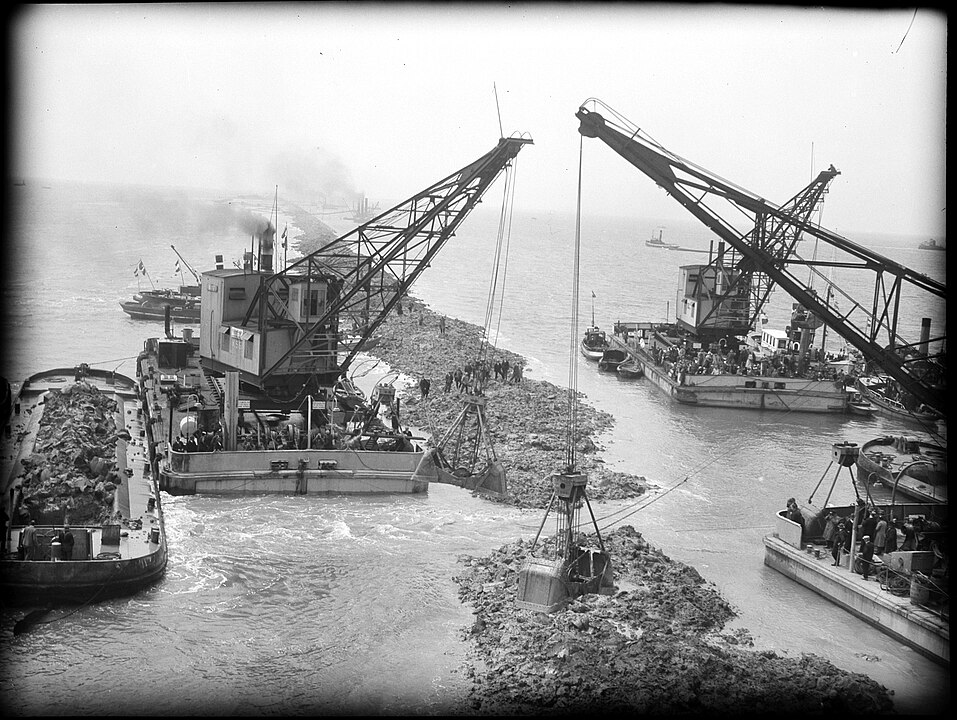
There were several reasons to do this. The first was that the North Sea Canal built in the 19th century provided much faster and direct access to Amsterdam’s port than the circuitous route of sailing past the city and entering Zuiderzee to the northwest. Secondly, centuries of overfishing had depleted Zuiderzee of its fish stocks. With the Dutch population exploding and the need for land increasing, a committee set about to investigate reclamation of land around Zuiderzee.
After the flood of 1916 and the famine of 1918, opinions were ready for this mega project and the parliament agreed, but it took another 9 years, until 1927, before the works actually began. Workers started by depositing till into the open sea until it breached the surface. The nascent dyke was then strengthened from land by basalt rocks and mats of willow switch at its base. The dyke could then be finished off by raising it further with sand and finally clay and grass.
The force of the water rushing through the last space in the dyke was very high by the end of the project, ten thousand workers, 27 large dredges, 13 floating cranes, 132 barges, and 88 tugs all rushed in after the tide was at its lowest to finish the dyke before it returned. Silent video footage captured the closure.
As a result of the dyke, a 12th province of the Netherlands could be established—called Flevoland, which stretches across 1,410 km2, (540 sq mi) that used to be a salt water bay. Incredible.
MORE Good News on this Day in History:
- A solar eclipse occurred, as predicted by Greek philosopher and scientist Thales, a phenomenon that led to a truce between battling armies in what became known as the Battle of the Eclipse — setting a cardinal date from which other dates can be calculated (585 BC)
- The first Continental Congress convened (1774)
- The Azerbaijan Democratic Republic declared its statehood becoming the first democratic republic in the Muslim world; the Democratic Republic of Armenia also declared its independence (1918)
- The Golden Gate Bridge in San Francisco, California, was officially opened to vehicles (1937)
- Women in Greece are given the right to vote (1952)
- 19-year-old West German pilot Mathias Rust evaded Soviet Union air defenses to land a private plane in Red Square in Moscow (1987)
- After 22 years of restoration work, Leonardo da Vinci’s newly-restored masterpiece “The Last Supper” was put back on display in Milan, Italy (1999)
- After weeks of public protests against a tyrannical regime, Nepal citizens—in the first full meeting of the Constituent Assembly—formally declared a republic, ending the 240-year reign of the Shah dynasty (2008)
171 years ago today, the quite magnificent watercolor painter Carl Larsson was born in Sweden. Known for his portraits, Larsson was able to convey both extraordinary detail and extraordinary style at will, with his works looking like a face seen in a dreamy mist or a children’s book. His paintings portray idyllic country life in Sweden, and once collected into an illustration book, sold like Sunday loaves.
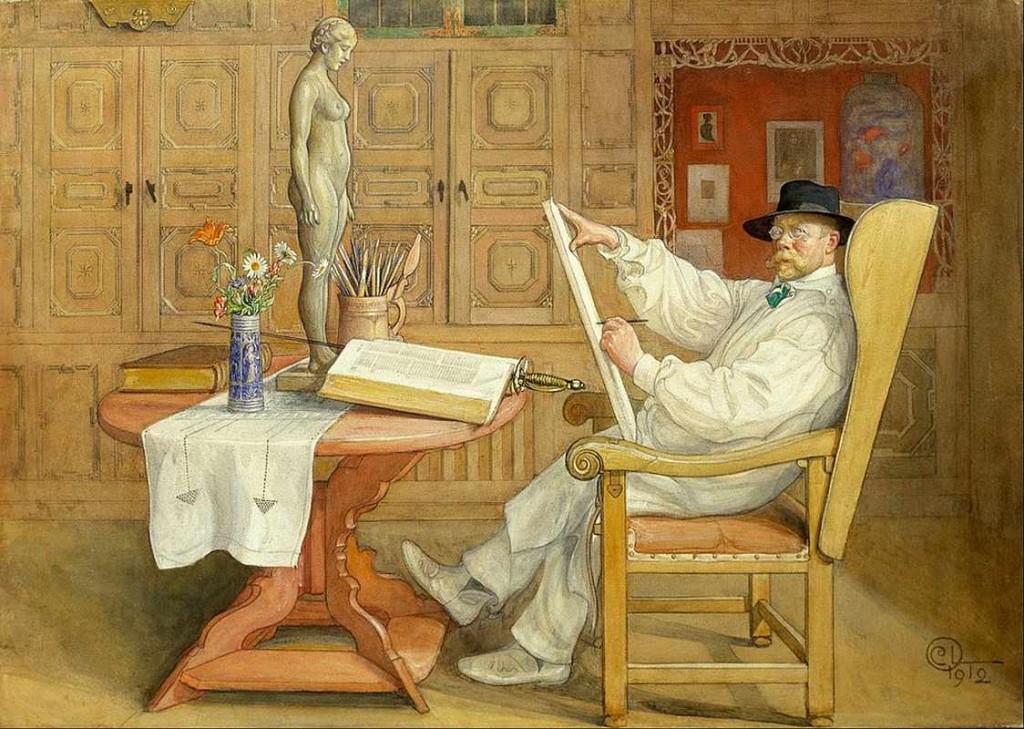
His parents were extremely poor, and his childhood was not happy. At age 13 he was able to attend a fine arts high school, which remained difficult until his talent began to blossom at 16.
After several years working as an illustrator of books, magazines, and newspapers, Larsson moved to Paris in 1877, where he spent several frustrating years as a hardworking artist without any success. 5 years later, he settled down in a Swedish artist’s colony outside Paris where he met his wife, Karin Bergöö.
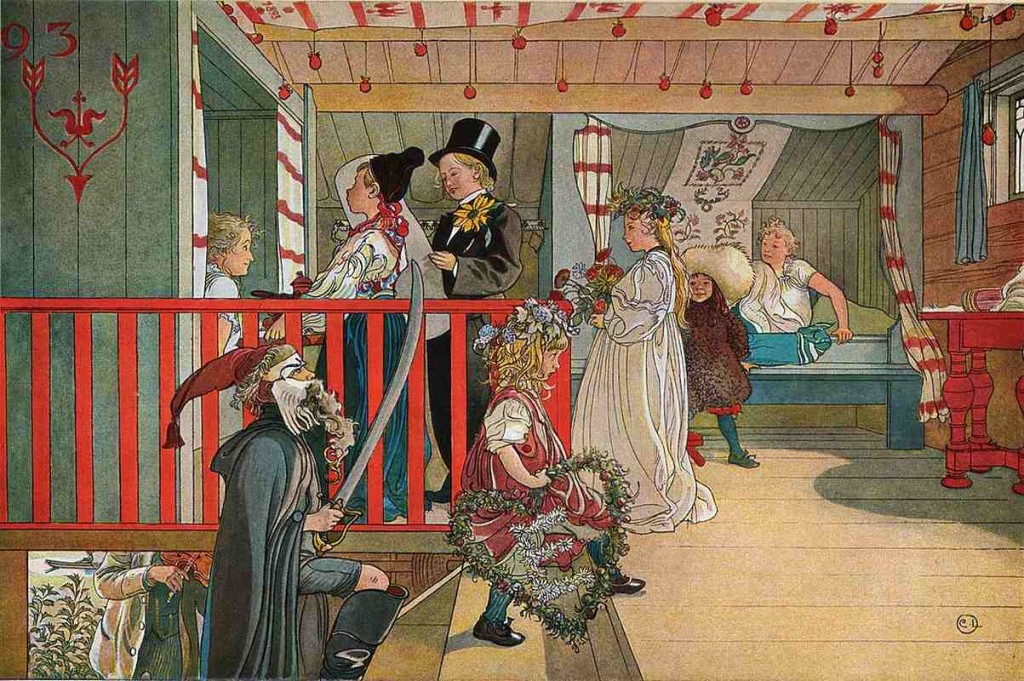
Quite unlike the archetypal tortured artist, it was the family of eight kids, Suzanne, Ulf, Pontus, Lisbeth, Brita, Mats, Kersti, and Esbjörn, that Larsson shared with Karin which fertilized his artistic soil.
In 1888, the young family was given a small house named Little Hyttnäs at Sundborn just outside Falun in Dalarna by Karin’s father Adolf Bergöö. Carl and Karin decorated and furnished this house according to their particular artistic taste and also for the needs of the growing family. Through his paintings and books, Little Hyttnäs has become one of the most famous artist’s homes in the world, transmitting the artistic taste of its creators and making it a major line in Swedish interior design. The descendants of Carl and Karin Larsson now own this house, now known as Carl Larsson-gården, and keep it open for tourists each summer from May until October.
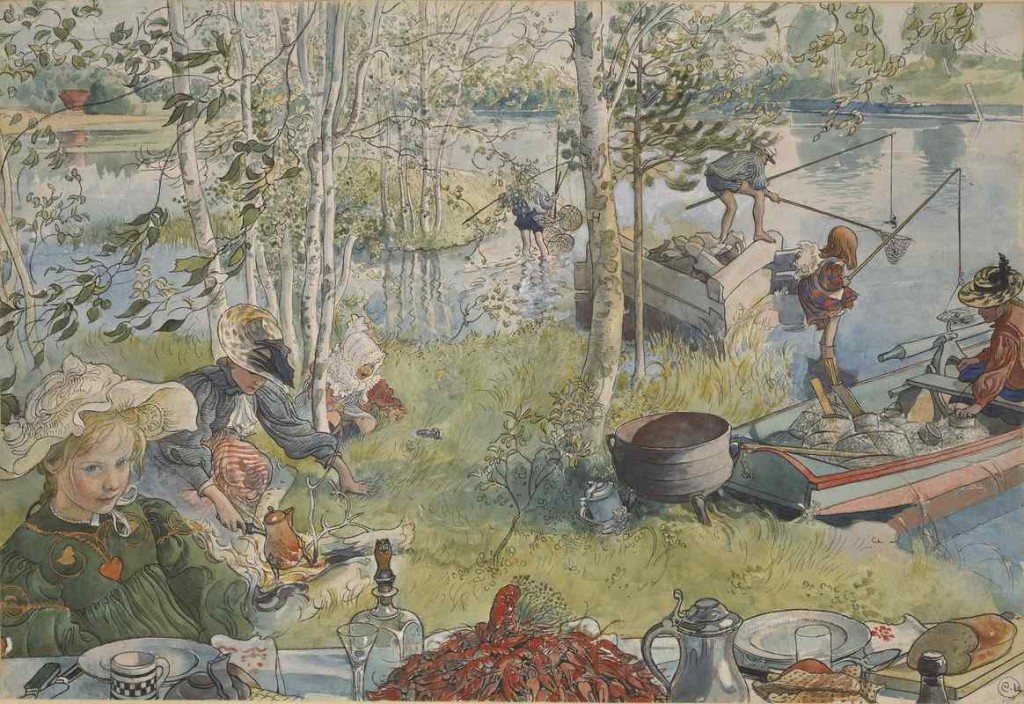
Larsson’s popularity increased considerably with the development of color reproduction technology in the 1890s. Larsson got a book containing full-colour reproductions of his watercolors, titled A Home, published in Germany in 1909. It immediately became one of the German publishing industry’s best-sellers of the year—40,000 copies sold in three months, and more than 40 print runs have been produced up to 2001. Carl and Karin Larsson declared themselves overwhelmed by such success. (1853)
116 years ago today, Ian Fleming, the writer of the James Bond character, was born in Kent. Serving as a naval intelligence officer during the Second World War, he drew largely on this experience to create the character of James Bond, an international man of mystery, working at the highest levels of British intelligence. (1908)
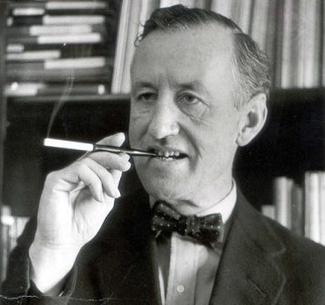
In 1940, Lieutenant Commander Fleming was deployed, under cover of a courier’s passport, to Gibraltar where he set up a surveillance post to ensure that the Allies had advance notice if a potential allegiance between Francisco Franco and Adolf Hitler didn’t compromise Allied operations in the Mediterranean. If Spain flipped or was taken by the Axis, Fleming’s greatest concern was the installation of Axis radar or infrared surveillance equipment, which would greatly endanger Allied navies. If the worst came to pass Operation Goldeneye was to carry out limited sabotage.
Not only did Fleming name his estate in Jamaica Goldeneye, but it was made into a movie, with the same name once all the Bond books had already been adopted.
After the war, Fleming wrote his first Bond novel, Casino Royale, in 1952. It was a success, with three print runs being commissioned to cope with the demand. Eleven Bond novels and two collections of short stories followed between 1953 and 1966. Altogether they have sold over 100 million copies and are among the most successful fiction series of all time. (1908)
63 years ago today, Amnesty International was founded in London, after Peter Benenson read the article The Forgotten Prisoners and concluded, “The newspaper reader feels a sickening sense of impotence, yet if these feelings of disgust all over the world could be united into common action, something effective could be done.”
Today, his organization directs 10 million people to advocate against human rights abuses.
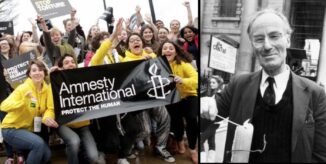
Their campaigning for compliance with international laws and standards, like those enshrined in the Universal Declaration of Human Rights, has led to the release of over 15,000 imprisoned for their beliefs or way of life, has ended the death penalty in 94 countries, and has brought murderous leaders to account.
In 1962, Amnesty sent a lawyer to the South Africa trial of Nelson Mandela, who said, “His mere presence, as well as the assistance he gave, were a source of tremendous inspiration.”
In the 70s, their investigations and pursuit of General Augusto Pinochet led to his arrest in the UK for widespread crimes committed in Chile—for which the group won the 1977 Nobel Peace Prize which praised their “defense of human dignity against torture .”
Following tireless campaigning from Amnesty supporters, the UN General Assembly adopted the Convention against Torture in 1984. In the 90s, they drew global attention to the plight of 300,000 child soldiers. In 2015, they won reparations for 15,600 villagers following two Shell oil spills in Nigeria and, in 2018, won a landmark UK ruling that held mass surveillance to be unlawful, and a violation of our rights to privacy.
They rely on individual donations to fund their work—CONTRIBUTE here. (1961)
A solar-powered Ferris wheel premiered at the amusement park on the Santa Monica Pier, arrayed with bright lights, and 75% more energy efficient than the old wheel, which was auctioned on eBay for $132,400. (2008)
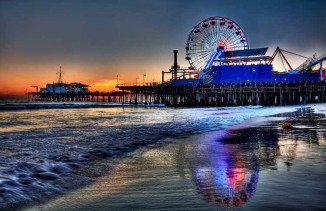
On this day in 1892, The Sierra Club was founded in San Francisco by John Muir. The Club became the largest and most influential grassroots environmental organization in America.  Its original mission was to protect California’s Sierra Nevada mountains from excessive mining and logging. They have since protected 250 million acres of wilderness—including Yosemite National Park—and helped establish the Sequoia National Park, home to the giant trees that are the largest living things on Earth, found naturally nowhere else on Earth.
Its original mission was to protect California’s Sierra Nevada mountains from excessive mining and logging. They have since protected 250 million acres of wilderness—including Yosemite National Park—and helped establish the Sequoia National Park, home to the giant trees that are the largest living things on Earth, found naturally nowhere else on Earth.

Arguably the Sierra Club’s most renowned preservation victory was leading the fight to prevent the Grand Canyon from being dammed in the 1960s. The ensuing years saw the organization broaden its mission to protecting clean air, clean water, and endangered species, and in the 21st century it is spearheading the effort to transition the United States from climate-disrupting fossil fuels to clean, renewable sources of energy. The Sierra Club today counts 3 million members and supporters in 64 chapters, in every state plus Puerto Rico.

Happy 80th Birthday to Gladys Knight, the singer, songwriter, actress, businesswoman, and author. She won two Grammys in one year with her group Gladys Knight & the Pips in 1973—for Midnight Train to Georgia and Neither One of Us (Wants to Be the First to Say Goodbye). That’s What Friends Are For was another No.1 hit, and you may remember Best Thing That Ever Happened To Me. (She also had 11 #1 R&B singles, and six #1 albums, resulting in seven Grammys total.) She sang the theme song for the James Bond film License to Kill and is listed as one of Rolling Stone magazine’s 100 Greatest Singers of All Time. She still tours to this day… (1944)

And Happy 79th Birthday to John Fogerty, the singer-songwriter who, with his brother Tom, founded Creedence Clearwater Revival. The band had nine Top 10 singles and 8 gold albums in just four years after their first hit in 1968. After his renowned songs—Proud Mary, Down on the Corner, Who’ll Stop the Rain, Bad Moon Rising, Fortunate Son, and the baseball anthem, Centerfield—CCR parted ways in 1972, and Fogerty began a successful solo career.
While self-quarantining together this month, John and his family have found solace in their home studio to create some music together: “We are having a little family fun together during the pandemic. It’s such a great feeling to be making and playin’ music surrounded by love,” wrote John on YouTube. “We all need to celebrate the life we have and remember how precious it is. Makes everything feel better for me.”
Together with his kids, Shane, Tyler, and Kelsy, they chased the quarantine blues ‘around the bend’, covering the CCR hit Up Around the Bend, from their fifth studio album which turns 50 in July. The 1970 LP, entitled Cosmo’s Factory, also included other chart-topping hits, like Lookin’ Out My Back Door and Who’ll Stop the Rain. WATCH The Fogerty Family jam… (1945)
SHARE the Milestones, Memories, and Music…




















[…] On this date in 2008, a solar powered Ferris wheel premiered at the amusement park on the Santa Monica Pier. The ride, arrayed with bright lights, is 75% more energy …read more […]
[…] post Good News in History, May 28 appeared first on Good News […]